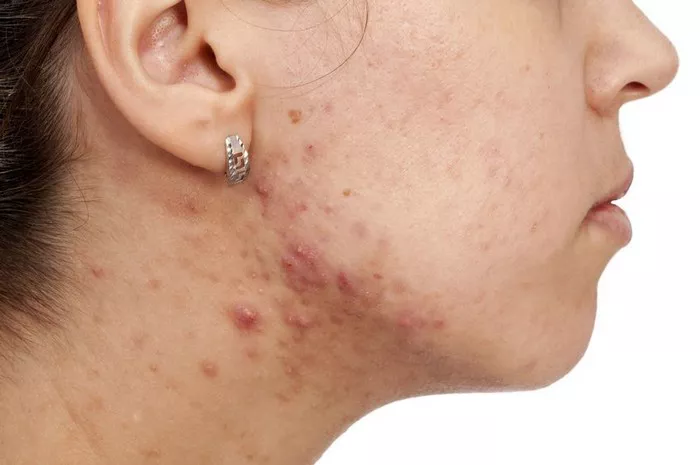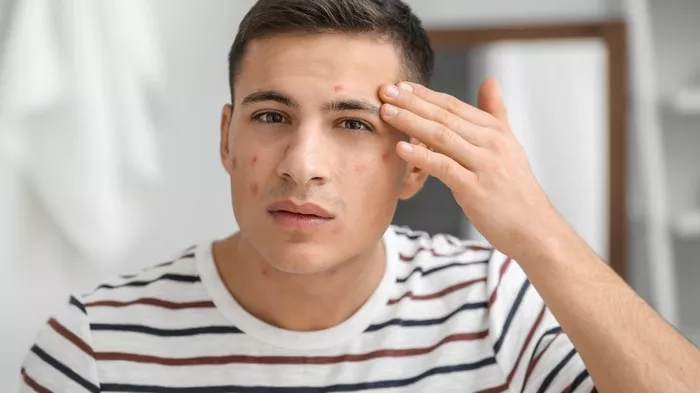Hidradenitis suppurativa (HS) is a chronic skin condition that can be painful and distressing. Understanding the signs and symptoms of HS is crucial for early diagnosis and effective treatment. In this article, we will explore what HS is, its causes, symptoms, diagnosis, and treatment options.
What Is Hidradenitis Suppurativa?
Hidradenitis suppurativa is a long-term skin condition characterized by the formation of painful lumps, abscesses, and skin lesions. These usually occur in areas where skin rubs together, such as:
- Underarms
- Groin
- Buttocks
- Inner thighs
- Breasts
The condition can severely impact a person’s quality of life, leading to physical discomfort and emotional distress.
Causes of Hidradenitis Suppurativa
The exact cause of HS is still not fully understood, but several factors may contribute to its development:
1. Genetic Factors
Family history plays a role in HS. If someone in your family has HS, your risk of developing the condition may increase.
2. Immune System Dysfunction
HS is believed to involve an abnormal immune response. The immune system may mistakenly attack hair follicles, leading to inflammation and skin damage.
3. Hormonal Factors
Hormonal changes, particularly during puberty or menstruation, can trigger flare-ups. Women are more likely to develop HS, suggesting a hormonal component.
4. Lifestyle Factors
Obesity, smoking, and excessive sweating can contribute to the severity of HS. Weight can cause friction between skin folds, exacerbating symptoms.
SEE ALSO: Understanding the 3 Stages of Hidradenitis Suppurativa (HS)
Symptoms of Hidradenitis Suppurativa
Identifying the symptoms of HS early is crucial for seeking proper treatment. Here are the most common signs:
1. Painful Nodules
HS often starts with painful lumps or nodules under the skin. These can feel tender and may be accompanied by swelling.
2. Abscess Formation
As the condition progresses, the nodules can develop into abscesses. These are painful, swollen areas filled with pus that may drain and form a foul-smelling fluid.
3. Skin Changes
Repeated flare-ups can lead to changes in the skin, including:
- Scarring
- Darkening of the skin
- Formation of tunnels (sinus tracts) under the skin
4. Foul Odor
The drainage from HS lesions can produce a strong, unpleasant odor, which can be distressing for those affected.
5. Itching and Irritation
Many people with HS experience itching and irritation in the affected areas. This can lead to scratching, which may worsen the condition.
Identifying HS: Key Signs to Look For
If you suspect you have HS, here are some key signs to help you identify the condition:
1. Recurring Lesions
HS is marked by recurring lesions. If you notice painful bumps that come and go in the same areas, this could be a sign.
2. Location of Lesions
Pay attention to the location of your symptoms. HS typically appears in skin folds, such as under the arms or in the groin area.
3. Drainage
If you experience drainage of pus or blood from the lumps, it may indicate HS. This drainage can have a foul odor.
4. Associated Pain
The pain associated with HS can be significant. If you experience chronic pain in specific areas, this could be a warning sign.
5. Family History
Consider your family history. If you have relatives with HS, your risk of developing it is higher.
Diagnosis of Hidradenitis Suppurativa
If you suspect you have HS, it is essential to see a healthcare professional for an accurate diagnosis. Here’s what to expect during the diagnostic process:
1. Medical History
Your doctor will begin by taking a detailed medical history. This includes asking about your symptoms, duration, and family history of HS.
2. Physical Examination
A thorough physical examination will help the doctor assess the affected areas. They will look for characteristic signs of HS, such as abscesses and scarring.
3. Imaging Tests
In some cases, imaging tests like ultrasound or MRI may be used to evaluate the extent of the disease and check for sinus tracts.
4. Biopsy
In rare cases, a skin biopsy may be performed to rule out other skin conditions. This involves taking a small sample of skin for laboratory analysis.
5. Rule Out Other Conditions
Your doctor may also want to rule out other skin conditions that can mimic HS, such as:
- Folliculitis
- Skin infections
- Acne
Treatment Options for Hidradenitis Suppurativa
While there is no cure for HS, several treatment options can help manage symptoms and reduce flare-ups. The treatment plan will vary based on the severity of your condition.
1. Lifestyle Modifications
Making lifestyle changes can help reduce the frequency and severity of flare-ups:
Maintain a Healthy Weight: Losing weight can reduce friction in skin folds.
Stop Smoking: Quitting smoking can improve overall skin health.
Wear Loose Clothing: Avoid tight-fitting clothes to minimize irritation.
2. Topical Treatments
Your doctor may prescribe topical medications to reduce inflammation and manage symptoms. Common options include:
- Antibiotic creams
- Corticosteroid creams
3. Oral Medications
For more severe cases, oral medications may be necessary. These can include:
Antibiotics: To treat bacterial infections and reduce inflammation.
Hormonal Therapy: Birth control pills may help regulate hormonal fluctuations.
Retinoids: These vitamin A derivatives can help reduce skin cell production.
4. Surgical Options
In severe cases of HS, surgery may be necessary. Surgical options include:
Incision and Drainage: For draining abscesses.
Surgical Removal of Affected Tissue: This can help prevent recurrent flare-ups and promote healing.
5. Biologics
Biologic medications target specific parts of the immune system. They can be effective in treating moderate to severe HS. Examples include:
Adalimumab (Humira): A monoclonal antibody that reduces inflammation.
Infliximab (Remicade): Another option that can help manage symptoms.
Coping with Hidradenitis Suppurativa
Living with HS can be challenging, both physically and emotionally. Here are some strategies for coping:
1. Seek Support
Joining a support group can help you connect with others facing similar challenges. Sharing experiences and coping strategies can be beneficial.
2. Practice Good Hygiene
Maintaining proper hygiene can help prevent infections and reduce flare-ups. Regularly wash affected areas with gentle soap and keep the skin dry.
3. Stay Informed
Educate yourself about HS and stay updated on treatment options. Knowledge can empower you to make informed decisions about your care.
4. Communicate with Your Healthcare Provider
Maintain open communication with your healthcare team. Discuss any changes in your symptoms or concerns you may have about your treatment plan.
5. Focus on Mental Health
Consider seeking counseling or therapy to cope with the emotional toll of HS. Mental health is just as important as physical health in managing chronic conditions.
When to See a Doctor
If you notice any signs of HS or if you have a family history of the condition, it’s essential to consult a healthcare professional. Early diagnosis and treatment can significantly improve your quality of life.
Signs You Should See a Doctor:
- Persistent pain or swelling in skin folds
- Recurring lumps or abscesses
- Drainage with a foul odor
- Skin changes in affected areas
- Family history of HS
Conclusion
Understanding the signs and symptoms of hidradenitis suppurativa is vital for early diagnosis and effective management. If you suspect you have HS, don’t hesitate to seek medical advice. With the right treatment and lifestyle modifications, many people with HS can lead fulfilling lives. Remember, you are not alone, and support is available. Prioritize your health and well-being, and take proactive steps toward managing your condition.
Related topics:


























